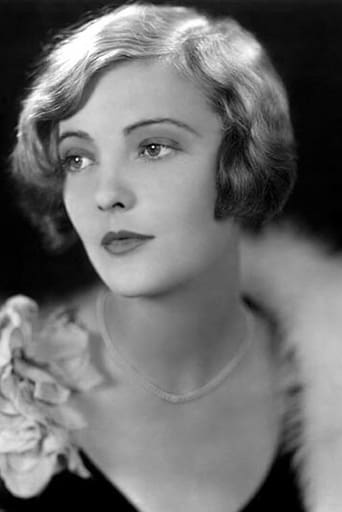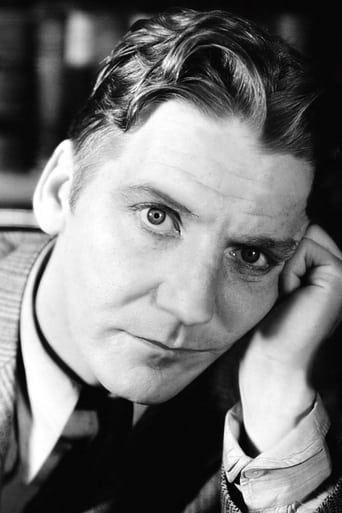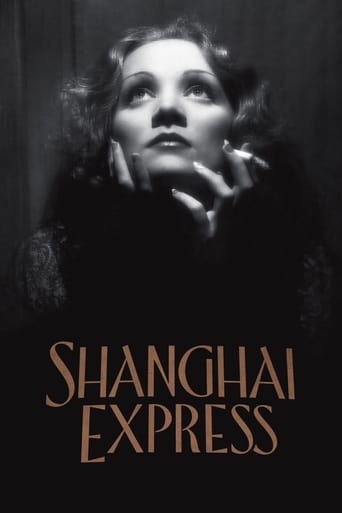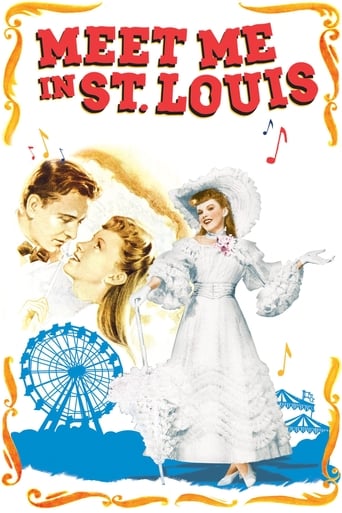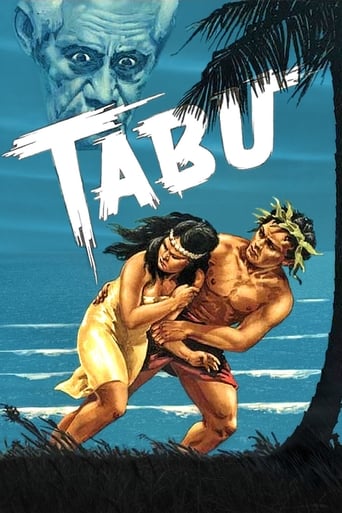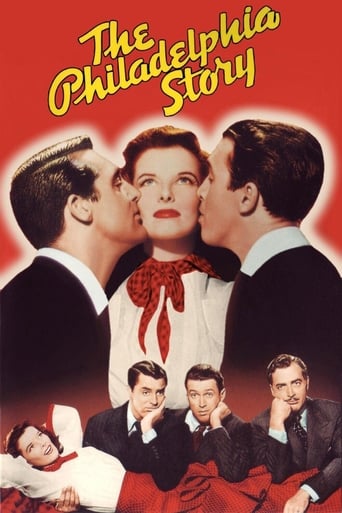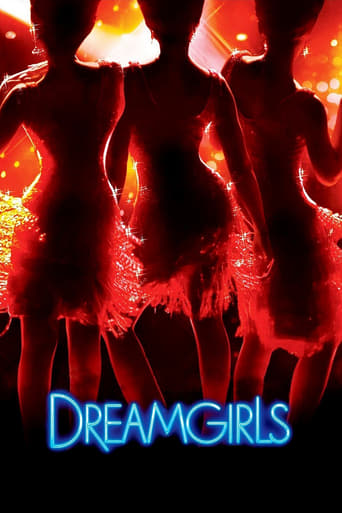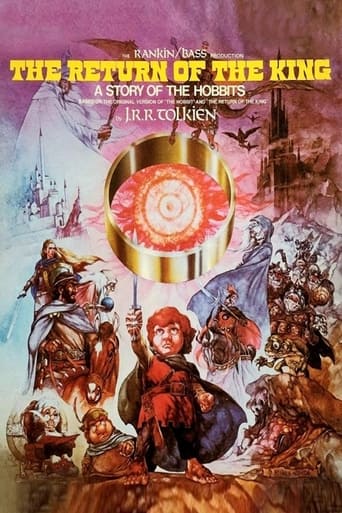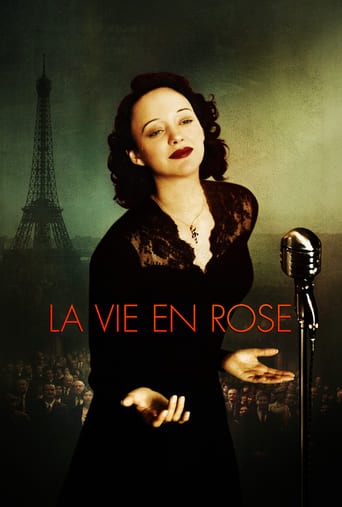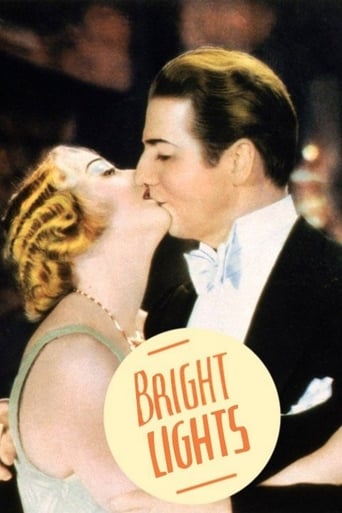
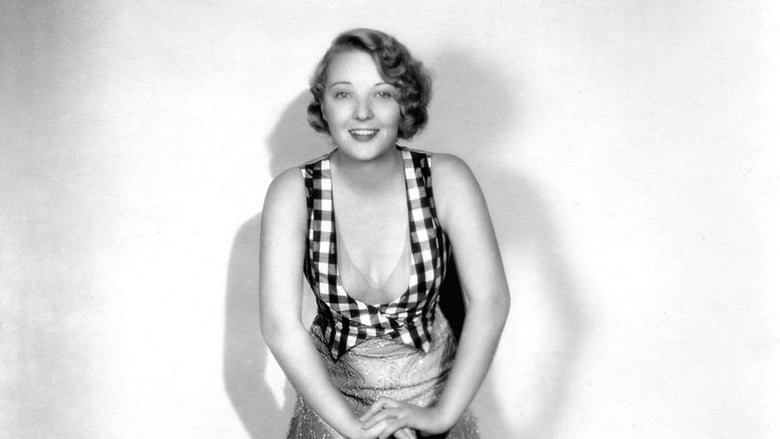
Bright Lights (1930)
In this light-hearted musical, an early color film, a successful actress tires of the bustle and hustle of her tawdry life and settles down to what she thinks is the blissful mundaneness of married life. Unfortunately, the actual drudgery of wifedom takes her by surprise and domestic turmoil ensues.
Watch Trailer
Cast


Similar titles
Reviews
The best films of this genre always show a path and provide a takeaway for being a better person.
The biggest problem with this movie is it’s a little better than you think it might be, which somehow makes it worse. As in, it takes itself a bit too seriously, which makes most of the movie feel kind of dull.
True to its essence, the characters remain on the same line and manage to entertain the viewer, each highlighting their own distinctive qualities or touches.
Through painfully honest and emotional moments, the movie becomes irresistibly relatable
"Bright Lights" (re-named "Adventures in Africa" for TV broadcasting many years after its release) is a cinematic Mulligan stew consisting of a murder mystery, multiple love stories, several musical numbers, and tedious stretches of low comedy barely held together by a witless and improbable script about a show girl (Dorothy Mackaill) who, with her partner- manager (Frank Fay) shimmies her way from small-time tropical dives and traveling carnivals to the Broadway big-time only to announce that she's giving up the stage to marry into wealth (in the person of Philip Strange as Mr. Emerson Fairchild of Long Island whose accent is British but whose mother's is Midlantic). The Fay character loves and protects Mackaill in a fatherly or businesslike manner but refrains from marrying her; every time he is about to give in to that urge he pulls back because some part of him senses that he is not worthy to be her husband. Mackaill finds his hot/cold behavior frustrating and infuriating. The development of this complex relationship takes a back seat to sometimes heavy-handed subplots enacted by the likes of Eddie Nugent in an ill-defined role (star's press agent?) eagerly trying to manage a gaggle of reporters which includes a barely visible young John Carradine and an all-too-visible Frank McHugh as an obnoxious drunk, who have assembled to cover Mackaill's final performance; James Murray and Inez Courtney as young lovers; Tom Dugan and Daphne Pollard as a violently discordant married dance team; Noah Beery as a lecherous figure from Mackaill's and Fay's sordid African past. Other, later, pre-Code films with similar elements include "I'm No Angel," "Forty-Second Street," "Murder at the Vanities" and Mackaill's outstanding 1932 feature "Safe in Hell."As far as the songs go, "Wall Street" near the beginning, despite a stage-filling chorus and carloads of set pieces and costumes, falls flat, even with expert song-and-dance man Fay at the center. He comes off better in the Harry Akst-Grant Clarke standard "Nobody Cares If I'm Blue." In dramatic scenes, however, his haggard appearance distracts from his emotionally nuanced performance. The makeup applied to his rugged features suggests Count Dracula and clashes with his gently rapid speaking voice and smooth singing style and stage manner. Among the other musical numbers, "Song of the Congo," "I'm Crazy for Cannibal Love" and "I'm Just a Man About Town" are the catchiest, both visually and melodically, though one can't help wondering what Busby Berkeley might have done with the staging. Mackaill is the centerpiece of all three; she performs a hula-type dance in the first two and wears a man's tux and top hat in the first half of the latter before emerging via camera trickery from the huddle of a male chorus wearing a dress. She also has some effective dramatic moments but, due perhaps to sloppy editing, misfires during a poorly staged dressing room temper tantrum. Her vocal range is limited, but she carries her songs confidently, dances gamely and looks magnificent in skimpy, spangled costumes as well as in screen-filling closeups.
"Bright Lights" is a good example of early cinema after the advent of sound. It includes some popular actors from the silent era who transitioned well enough in sound, but whose careers lasted less than a dozen more years. Dorothy Mackaill, Frank Fay, Inez Courtney, Edward Nugent, Daphne Pollard, and Philip Strange had short careers in sound. James Murray and Edmund Breese died in the mid-1930s and Noah Beery died in 1946. Only Tom Dugan had a film career that lasted into the 1950s and ended with his death in 1955. I mention this as one reason that few of these names may be known today – other than by serious movie buffs. Mackaill was a moderately talented singer and actor who played glamor roles in a variety of film genres. But, as film technology advances leapfrogged within a few short years of sound, the competition increased. The glamor age of Hollywood was just beginning. Many new beautiful and talented actresses came on the scene. That included several multi-talented women who could also sing and/or dance. Alice Faye, Jeanette MacDonald, Deanna Durbin, Judy Garland, Eleanor Powell and Ginger Rogers had talents that dwarfed Mackaill. Mackaill made her last theatrical movie in 1937. She was just 34, and she would live to be 87. Frank Fay started in movies with sound. Although a talented actor and singer, he faced the same competition Mackaill had. But, added to his declining career was his huge ego, a drinking problem, and difficulty in working with others. His film career all but ended with three early films in the 1940s. Some viewers and the DVD sales company like to promote this as a "pre- code" movie. I think that's done for a lot of films that would not have much of a problem when the motion picture industry began to enforce its code in 1934. But, Mackaill was one of the stars who played roles that had provocative scenes or scantily dressed women. This film has a silhouette scene of the actress undressing behind a screen. Other than that, the chorus costumes and performances were no more revealing or suggestive than any of the many musical films from the mid-1930s onward. "Bright Lights" is what might be called a formulaic film of early musicals. The musicals most of us remember and enjoy from the past are those that have considerable plots. They tell the stories with musical and/or dance numbers at intervals. But, the earliest of the sound era musicals were mostly revues. They had scripts with very thin plots, if any, and were mostly staged music and dance numbers, sometimes with comedy stuck in, as in the vaudeville days. Besides this example, the technical and production aspects of "Bright Lights" are examples of the early transitions in film. For instance, the heavy use of makeup in this film is most obvious with Frank Fay. The acting at times seems stuck in place – probably because this was filmed with fixed microphone locations. And, the acting itself still has some twinges of melodrama – a carryover from the silent film days.There are no memorable songs from this film, and the choreography of the big numbers is rudimentary compared to later accomplished musicals. The film has a thin plot, but there are no exceptional performances. It has some historical value for a look at a handful of early actors who bowed out of films within a few short years. And, it has some value in showing the state of the film craft in its early years of transition to sound and other major advances.
Maria Montez was once quite rightly dubbed Queen of Technicolor. As for the King? Well, there was a King, true, but he wasn't an actor (at least not a regular actor). He was director Michael Curtiz, called the King of Technicolor because it was claimed he directed more Technicolor (two-strip and three-strip Technicolor, that is) movies than anyone else. A difficult assertion to prove or disprove. Certainly Curtiz was King of Technicolor on the Warner Bros. lot. Maybe over-all. I'll leave that for some other researcher to ponder. What we do know for a fact is that 1930 was one of Technicolor's greatest years. Sixteen full-length features plus one, M-G-M's The March of Time shelved and never released, plus eighteen features with Technicolor sequences, totals thirty-five — a figure not exceeded until 1948. Warner Bros.-First National were responsible for no less than sixteen of these Technicolor releases, but only three were directed by Curtiz: Bright Lights, Under a Texas Moon and sequences in Mammy. Just about all the Warner-First National output were musicals (no wonder the public tired of the genre so quickly in 1930). Bright Lights is no exception. It's a shame in fact that even more songs weren't packed in to edge out even more of the silly story. It would have to be the most stupid, most idiotic, most unbelievable, most melodramatically ridiculous plot I've ever encountered. At least it's original. No-one would ever want to copy or imitate it, that's for sure!However, the story does allow us to evaluate the players, particularly lovely, charismatic, almost forgotten, British-born Dorothy Mackaill, a big star in silents who made the transition to sound with no problems at all, but was left on the sidelines when Warner Brothers bought out First National and began trimming National's star roster at the height of the Depression. Another problem – not of Dorothy's making, but entirely the fault of Jack Warner – was that her vehicles were not popular with the public. This one, chock-a-bloc with elaborate production numbers, hit theaters when the public was absolutely fed up with musicals. Hence a desperate title change to Adventures in Africa which was not only inappropriate – the "African" footage didn't amount to more than ten minutes – but wildly deceptive. So who did people blame? Jack Warner? No! Mike Curtiz? No! "Humph" Pearson and Henry McCarty? No! Even over-zealous Frank Fay who out-stays his welcome. No! This was only Fay's third feature film, and he had no box office drawing power anyway. For 99% of moviegoers, Dorothy Mackaill was number one on their hit list. My dad thought that the sole function of producers was to shell out the money and that directors were in charge of photography and other technical aspects. As for the stars – they made up their own scripts and directed themselves! And those notions was shared by almost the entire line-up of rank-and-file picturegoers. So if they hated Adventures in Africa – which they did (in spades) – the number one (and perhaps only) figure on their hate lists was Dorothy Mackaill. True, Frank McHugh's inebriated reporter hit the spot, but his routines ranked a poor second to all that singing and dancing – which you and I love, but which back in 1931, just about everyone from critics to choir boys hated!
... in one of the wacky early talkies that I bet Michael Curtiz wishes he could have erased from his resume.I give this 7 stars mainly for the early talkie fan. It really is pretty good for a 1930 back-stager and pretty original. The alternate title "Adventures in Africa" is rather puzzling since the movie spends all of ten minutes there, in a South African cabaret. However these are important moments as the conclusion to the entire story is dependent on events there.The movie opens with Louanne's (Dorothy Mackaill) last night on the Broadway stage as she is marrying the wealthy Fairchild after the show. Fairchild is accompanied by his sour-faced mother and sister who look more like they are going to a funeral than a wedding since they are none too happy about the family heir marrying an entertainer. Frank Fay has a very good role here as Wally, the man who has been Louanne's protector and somewhat on-stage partner for years. Wally is definitely in love with Louanne, and Louanne seems to have a bit of a thing for Wally in spite of her engagement, although the love has remained unrequited. If you think it the thing of curiosity seekers to see Frank Fay playing romantic lead to Dorothy Mackail, then think again. The two have real chemistry.The fly in the ointment? Noah Beery as the diamond smuggler Miguel who resents Louanne because she once forcefully resisted his attempted rape. Honestly, Mr. Beery! Didn't Warner Brothers ever think you plausible as simply asking a girl out for dinner and a show? In every early Warner Brothers talkie in which I've seen Mr. Beery he's either threatening human sacrifice (Golden Dawn) or execution by firing squad (Noah's Ark) in order to have his way with a woman.Besides all of the drama, there are some really great musical numbers, some bizarre to the point of being charming. The opening number has Frank Fay in a big musical production entitled "Wall Street". From the lyrics people didn't like bankers any more in 1930 than they do today. After seeing Dorothy Mackail scantily clad for the tropical hula number "Cannibal Love" in which her fellow cannibals yield shields with crosses on them - maybe they ate some Crusaders??? - she returns for "Man About Town" dressed like Fred Astaire in tuxedo and tails with her blonde hair hidden under her top hat. The grand prize for most bizarre number has to go to a very short jazz number performed in the South African club by an unnamed stout short female singer with a booming voice accompanied by a rather clumsy chorus dancing right behind her. It looks as if any of the chorines took a wrong step and kicked just a little harder the jazz singing dynamo would have taken it right in the pants and landed in the front row of the audience.Also look out for Frank McHugh as a drunken fresh reporter who even in 1930 is sporting his trademark mischievous laugh and James Murray of "The Crowd" in a rare talkie appearance.I watched the Warner Archive copy of Bright Lights, and if you want to see it the way it should be seen I would advise getting a copy of this restored version. It doesn't have that fuzzy look that black and white copies of two strip Technicolor films generally have, and the picture and sound are crisp and clear throughout.


